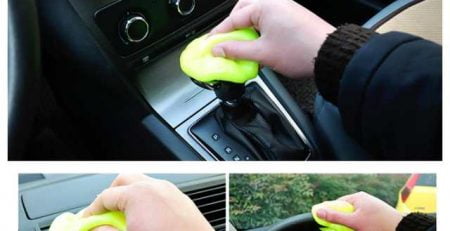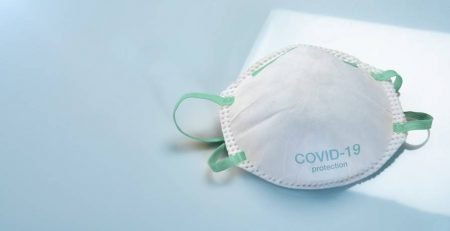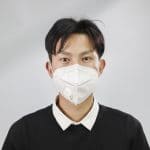Surgical masks, KN95, FFP2, or FFP3? Let’s clarify.
What are the Masks?
Filtering masks or face masks are Personal Protective Equipment – PPE – capable of reducing the wearer’s exposure to foreign substances such as dust, fine dust, bacteria, and viruses.
In this historical moment, with the pandemic underway by Sars-COVID-19 – Coronavirus – PPE plays a fundamental role in reducing exposure to the virus in the healthcare environment and homes and public places.
The use of the masks must always be combined with other prevention / personal and respiratory hygiene actions. It should always be remembered that no measure alone can provide complete protection against infections, but only a combined series of steps can reduce the risk of disease. In particular:
- Wash your hands frequently with soap and water, or without them, with alcohol-based cleaning solutions.
- Cover your nose and mouth with a tissue when coughing or sneezing
- Avoid touching eyes, nose, and mouth with unwashed hands.
- Stay home, refraining from going out.
Do you know why protective masks are so important? Find out on our blog Why masks are essential for fighting Covid-19.
Perfessional Medical Mask Disposable
-
Health
Perfessional Medical Mask Disposable 3-Ply Face Mask 10 -100 Pc
$9.99 – $39.99
Add To CartQuick View
Perfessional Medical Mask Disposable
- Health
Perfessional Medical Mask Disposable 3-Ply Face Mask 10 -100 Pc
$9.99 – $39.99Add To CartQuick View
What masks are there, and when should they be used?
The Masks can be divided into two broad groups: Surgical Masks and Filtering Masks or Facials. Let’s analyze them together:
Surgical masks
Surgical masks are disposable medical devices consisting of an overlap of layers, usually three, in non-woven fabric, joined by a hot melting process; they are equipped with laces or elastic bands that allow their adherence, albeit incomplete, to the face.
Surgical masks protect against the spread of viruses and bacteria by blocking the droplets of respiratory secretions – droplets – emitted by the sick people who wear them, preventing the surrounding people from coming into contact with them. However, surgical masks do not protect the wearer against fine aerosols that contain very small infectious particles such as viruses. Once used, disposable surgical masks must be immediately disposed of in the trash.
Surgical masks must comply with the European standard UNI EN 14683: 2019 + AC: 2019
Perfessional Medical Mask Disposable
-
Health
Perfessional Medical Mask Disposable 3-Ply Face Mask 10 -100 Pc
$9.99 – $39.99
Add To CartQuick View
Perfessional Medical Mask Disposable
- Health
Perfessional Medical Mask Disposable 3-Ply Face Mask 10 -100 Pc
$9.99 – $39.99Add To CartQuick View
Who are Surgical Masks suitable for?
Surgical masks are indicated for the general population in daily use in uncrowded and uncontaminated places. They protect those around us from infection, but they do not protect the wearer from the disease itself.
Did you know that some masks with performances similar to surgical masks can be made at home? Discover the best materials to make a homemade face mask
How is a surgical mask made?
Surgical masks consist of an overlap of layers, usually three, of a material called polyester or polypropylene. Let’s see them more closely:
- Inner layer: it is made of Spun Bond polypropylene non-woven fabric. It is a layer with an adsorbent capacity capable of capturing the moisture expelled by breathing and leaving the face dry. It is hypoallergenic to guarantee maximum tolerability during application to the face.
- Intermediate layer: it always consists of non-woven polypropylene but Melts Blown type. This production technology allows us to create a high-density layer of yarn and fibers with an irregular arrangement. This three-dimensional arrangement of the fibers gives the intermediate layer the exceptional filtering power of the mask and the ability to block the passage of very small particles.
- Outer layer: always made of Spun Bond type TNT – like the inner layer. Usually, it is covered with a hydrophobic treatment capable of guaranteeing excellent resistance to liquids and aerosols.

All masks in addition to the 3 layers possess
- Elastics or side ties, which allow a correct adhesion to the face
- Moldable underwire placed on the upper part of the nose which allows the masks to adhere correctly to the face
Perfessional Medical Mask Disposable
-
Health
Perfessional Medical Mask Disposable 3-Ply Face Mask 10 -100 Pc
$9.99 – $39.99
Add To CartQuick View
Perfessional Medical Mask Disposable
- Health
Perfessional Medical Mask Disposable 3-Ply Face Mask 10 -100 Pc
$9.99 – $39.99Add To CartQuick View
Facial Respirators or Filtering Masks
This term refers to individual protective devices with a filtering action for the protection of the respiratory tract. The filter masks are designed to protect the wearer from extremely fine aerosols – droplets containing bacteria and viruses, thus efficiently safeguard the user from contagion from the outside. They are masks that adhere entirely to the face and are equipped with laces and elastic bands that keep them firmly on the user’s face.
They are usually indicated for healthcare workers such as doctors, nurses, and pharmacists, for people at risk such as elderly and not in perfect health and when attending crowded and potentially contaminated places.
The Filtering Masks comply with the EN149 certification with the reference year.
Classification of Filter Masks
The Filter Masks based on their performance and filter capacity can be classified in
- KN95 FFP2 Filter Masks are masks with the ability to Filter> 95% of the particles with a diameter of 2.5 microns (PM2.5)
- Masks FFFP3 are filter masks with the ability to Filter> 98% of the particles with a diameter of 2.5 microns (PM2.5)
- Masks KN95, FFP2, FFP3 with exhalation valve, are filter masks with similar capacities as the previous ones but equipped with an exhalation valve.
KN95 Face Masks With Breathing Valve
-
Health
KN95 Medical Face Masks With Breathing Valve Fresh Air-Purifying Supply
$8.99 – $198.99
Add To CartQuick View
KN95 Face Masks With Breathing Valve
- Health
KN95 Medical Face Masks With Breathing Valve Fresh Air-Purifying Supply
$8.99 – $198.99Add To CartQuick View
What is the Exhalation Valve, and what is it for?
A separate consideration must be made for the Masks equipped with Exhalation Valve: these masks have the same characteristics as those described above. Also, they are equipped with an exhalation valve, which has no effect on the device’s filtering capacity but gives greater comfort when the mask is used for a long time. It allows hot air to escape, avoiding the formation of humidity and condensation.
The masks equipped with an exhalation valve are recommended in the case of health workers in constant movement and activity (e.g., first aid operators or ambulances)
However, be careful, the Exhalation Valve allowing the escape of air also allows the passage towards the outside of particles – droplets – which can potentially contain the bacterial and viral load. So these masks are not suitable to protect the people around us but only protect the user from contagion.
How is a filter mask made?
A filter mask consists of overlapping layers, present in a number ranging from four to six, which provide a filtering power of up to 98%
The layers that are always present in a filter mask are:
- Outer layer: made of non-woven polypropylene fabric; it allows to isolate the mask externally from liquids, clouds, and large particles. Usually, this layer receives a hydrophobic treatment that guarantees its water repellency.
- Filtering layer: consisting of overlap of 2 to 4 layers. Generally, it is in non-woven polypropylene material. They are made with Meltblown technology, which forms a lattice of high-density fibers and exceptional filtering power. One of the layers can also consist of Activated Carbon, which, thanks to its excellent porosity, retains most organic substances.
- Electrostatic filter layer: thanks to the dense and compact structure, it collects the smallest and most electrostatically charged dust particles
- Inner layer: non-woven fabric is delicate towards the skin to allow the best wearability. It has an adsorbent action on the exhaled and saliva to restore the levels of humidity in the mask.

Also, all filter masks are equipped with
- Laces: elastic, allow correct adhesion to the Filtering Mask’s face and usually pass behind the nape
- Nasal underwire: Placing outside the mask allows you to correctly confirm the shape of the nose and ensure perfect adhesion to the face.
How long do the Filter Masks last?
The Filter Masks have a working cycle duration in the presence of a high PIMIO and PM2.5. A work cycle is therefore intended for 8-10 hours in a contaminated environment. It is evident that in daily use, the mask can also be used in subsequent days, provided that there are no difficulties or respiratory resistance.
Are the Filter Masks reusable?
In most cases, the filter masks are disposable. However, their eventual reusability is described by the manufacturer: in the name of the mask (e.g., FFP2 or FFP3}, the abbreviations NR are accompanied when the mask is Non-Reusable and R when the mask is reusable. (Eg FFP2 NR, filtering mask FFP2 not reusable)
What is the Clogging test?
For some masks in the lotus classification, it is possible to highlight the term D, which indicates whether the mask has been subjected to the clogging test: this test allows us to highlight the mask’s performance in critical conditions. Where the letter D is present, the filtering mask has a lower respiratory resistance than a mask that has not passed this test (e.g., FFP2 NRD, FFP2 non-reusable filtering mask that has passed the clogging test}
How can I clean the filter masks?
Filter Masks are to be used based on their classification. Given the difficulty in finding them in these periods for use in subsequent days, we recommend storing them in a dry place away from contaminants and disinfecting them with only 70 ° alcohol nebulized with a spray dispenser their surface.
KN95 Face Masks With Breathing Valve
-
Health
KN95 Medical Face Masks With Breathing Valve Fresh Air-Purifying Supply
$8.99 – $198.99
Add To CartQuick View
KN95 Face Masks With Breathing Valve
- Health
KN95 Medical Face Masks With Breathing Valve Fresh Air-Purifying Supply
$8.99 – $198.99Add To CartQuick View
Which mask should I use to protect myself from Coronavirus?
Surgical masks
- Suitable for: all people for daily use in places safe from contamination
- Who protect: protect those from the virus but do not protect the wearer
KN95, FFP2, and FFP3 masks
- Suitable for: health workers, at-risk, in contaminated places
- Who protect: protect the wearer and those around him
KN95, FFP2 and FFP3 masks with valve
- Suitable for: healthcare workers in contact with infected or on the move (e.g., operators 118}
- Who protect: protect the wearer but not those around him

Template comparison chart
In the following summary diagram, it is possible to have a direct comparison between all the templates listed in the article. The masks are classified according to their filtering performance and how many particles they block during breathing. Specifically, refer to
- Inlet filter: reference is made to the inspiratory act, therefore the possibility that the user of the respiratory protection device may inhale droplets and contract the virus. The higher the value, the better the mask performance.
- % Filter on exit: refers to the expiratory act, therefore to the device’s ability to block the particles expelled during breathing, the higher the value, the better the device’s ability to stop the droplets from escaping and therefore to limit the contagion of the virus
| Respiratory protection device | % Inlet particle filter | % Particle filter output |
| No mask | 0% | 0% |
| Triple Veil Surgical Mask | 0% | 90% |
| KN95 mask – FFP2 | 95% | 100% |
| template KN99 – FFP3 | 98% | 100% |
| KN95 – FFP2 mask with valve | 95% | 20% |
| KN99 – FFP3 mask with valve | 98% | 20% |
KN95 Face Masks With Breathing Valve
-
Health
KN95 Medical Face Masks With Breathing Valve Fresh Air-Purifying Supply
$8.99 – $198.99
Add To CartQuick View
KN95 Face Masks With Breathing Valve
- Health
KN95 Medical Face Masks With Breathing Valve Fresh Air-Purifying Supply
$8.99 – $198.99Add To CartQuick View
The UNI EN 149: 2009 standard
We hear so much about this legislation. But what do these acronyms mean? They are an acronym. Let’s see below.
- UNI is the abbreviation of the Italian National Unification Body; it is a private type association that has the task of drafting and sharing technical standards for all industrial and commercial sectors. When it is present on a product or device, it means that it complies with the professional standards that have been established.
- EN is the abbreviation that identifies the standards drawn up by an international committee called the European Standardization Body. The member countries of the European Union must necessarily comply with these standards to harmonize and unify all the technical standards in Europe. A device or product that has the UNI national legislation must also comply with the European EN standard; therefore, in Italy, the acronym UNI EN must necessarily be present in the association.
- 149: 2009 is the standard number and the date it was drafted. This standard is the official version of the European standard EN 149: 2001+ integration A1 (May 2009 edition). The standard specifies the minimum requirements for dust filter half-masks used as respiratory protective devices. You can find the whole standard by clicking here

Therefore the UNI EN 149: 2009 standard is a technical standard that incorporates the international standard EN 149: 2001 + the A1 integration of 2009, which describes from a technical point of view how all respiratory protective devices must be made. As well as the classification FFP1, FFP2, FFP3 to which they must respond.
All respiratory protective devices produced in Italy and Europe must comply with this standard and report it in their technical manual or packaging.
But be careful; this does not apply to the respiratory tract devices dispensed by way of derogation following the Curaitalia decree of March 17, 2020.
In fact, following the Coronavirus emergency, respiratory protection devices began to be scarce throughout Europe. Thus, the President of the Conte Council, together with the Council of Ministers, has decreed the possibility of importing these devices even if produced outside the European community. The protective devices produced outside the European city, such as in China or America, follow technical standards, equally rigid and precise, but drawn up by different rules and not harmonized with the EN standards.
Therefore, for respiratory protection devices imported by way of derogation and by the Curaitalia decree, we do not find the Italian and European reference standard on the packaging.
Even if imported by way of derogation, these devices must comply with European production standards. Therefore, Community verification bodies have been appointed to assess the production standards of the imported machines and verify their goodness. Only later can they be placed on the European market.
KN95 Face Masks With Breathing Valve
-
Health
KN95 Medical Face Masks With Breathing Valve Fresh Air-Purifying Supply
$8.99 – $198.99
Add To CartQuick View
KN95 Face Masks With Breathing Valve
- Health
KN95 Medical Face Masks With Breathing Valve Fresh Air-Purifying Supply
$8.99 – $198.99Add To CartQuick View
The UNI EN 14683: 2009 standard
The UNI EN 14683 of 2009 is the Italian standard that incorporates the Community technical standard that describes surgical masks’ characteristics.
Also, in this case, the considerations made previously apply.
The standard describes all the features that a surgical mask must have, what tests it must undergo before being placed on the market, and how it must be built.
The VAT on the Masks
On May 19, 2020, with the decree published in the Official Gazette of the Italian Republic No. 128 – Defined Relay Decree, VAT is canceled on multiple devices aimed at preventing the COVID pandemic 19
With the Relaunch decree, the title of which reads “Urgent measures in the field of health, support for work and the economy, and social policies related to the epidemiological emergency from Covid-19”, all Masks and all PPE are sold in VAT exemption scheme. This scheme will be valid until December 31, 2020.
From January 1, 2021, the 5% VAT regime will instead apply.
KN95 Face Masks With Breathing Valve
-
Health
KN95 Medical Face Masks With Breathing Valve Fresh Air-Purifying Supply
$8.99 – $198.99
Add To CartQuick View
KN95 Face Masks With Breathing Valve
- Health
KN95 Medical Face Masks With Breathing Valve Fresh Air-Purifying Supply
$8.99 – $198.99Add To CartQuick View
Which devices are included in the Relaunch Decree?
The relaunch decree includes all the devices aimed at preventing the COVID 19 epidemic with VAT exemption until December 31, 2020, and 5% VAT from January 1, 2021. They fall into this category
- Surgical masks
- KN92, FFP2, FFP3 filter masks
- Latex and vinyl gloves, Goggles and Protective Visors
- All of Protection, shoes, overshoes, headgear, waterproof gowns and surgical gowns
- Thermometers
- Hand disinfectant cleaners
- Hand disinfectant and sanitizing gels
- Sterile test tubes
In addition to many other products for hospital use such as helmets and ventilation devices, aspiration systems, laryngoscopes, electrocardiograph and monitoring instruments for intensive care


















Legg att eit svar
Du må vere pålogga for å kommentere.